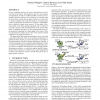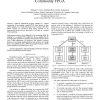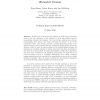11 search results - page 2 / 3 » Physically restricted authentication with trusted hardware |
DATE
2010
IEEE
13 years 9 months ago
2010
IEEE
For any computing system to be secure, both hardware and software have to be trusted. If the hardware layer in a secure system is compromised, not only it would be possible to ext...
SIES
2009
IEEE
13 years 11 months ago
2009
IEEE
— Software intellectual property (SWIP) is a critical component of increasingly complex FPGA based system on chip (SOC) designs. As a result, developers want to ensure that their...
HOTOS
2003
IEEE
13 years 10 months ago
2003
IEEE
Cerium is a trusted computing architecture that protects a program’s execution from being tampered while the program is running. Cerium uses a physically tamperresistant CPU and...
PET
2010
Springer
13 years 8 months ago
2010
Springer
In this work, we propose a new platform to enable service providers, such as web site operators, on the Internet to block past abusive users of anonymizing networks (for example, T...
TII
2010
12 years 11 months ago
2010
Software intellectual property (SWIP) is a critical component of increasingly complex field programmable gate arrays (FPGA)-based system-on-chip (SOC) designs. As a result, develop...



